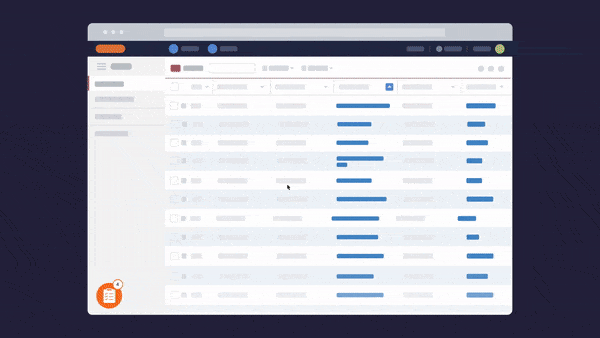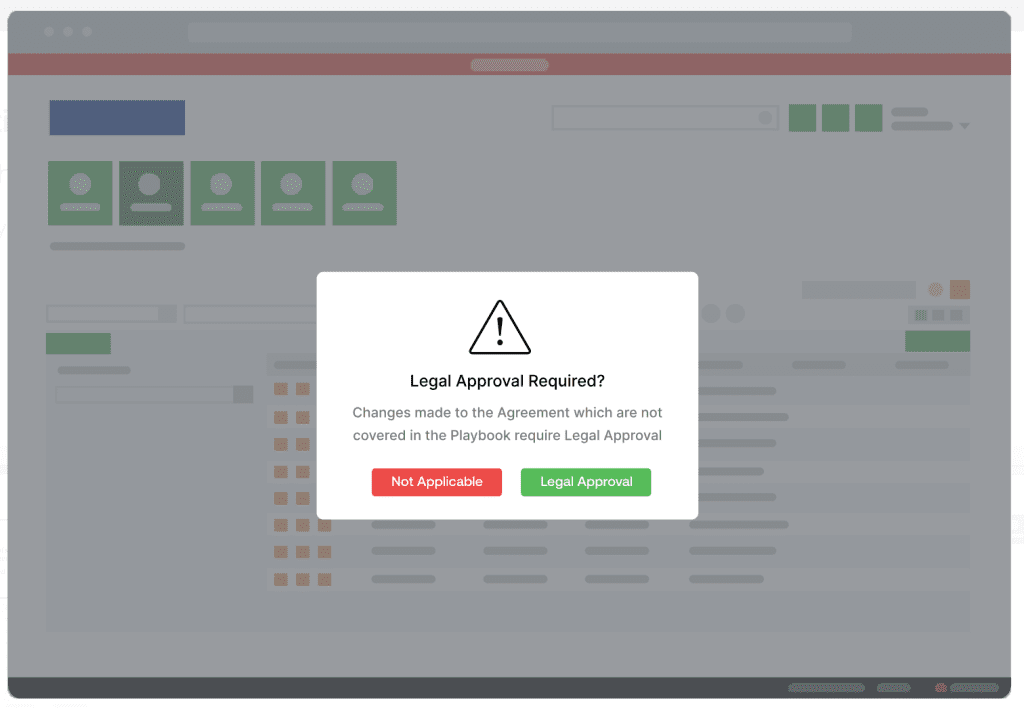
Levi Olmstead


What’s the ROI for an applicant tracking system (ATS)? For the most part, it depends on who you ask. But, the best way to answer that question is to ask it backward using a practical example: how much does a bad hire cost?
On average, every year, your company will experience roughly an 18% turnover in your workforce. At the same time, the Department of Labor estimates that each poor hire will cost 30% of their annual salary. If you’re an SMB of 40 employees (at $59,428 each—the national average) to your company annually, that employee churn, combined with the financial cost of each lousy hire would set you back $356,568 every year. Now consider the cost scaled to an enterprise of 1,000+ employees.
If you don’t do anything about your hiring strategy, over your company’s lifetime, you’ll lose tens or hundreds of millions to avoidable poor hiring decisions. That’s the problem an applicant tracking system solves: it offers a scalable, all-in-one platform for managing the hiring process so that it’s easy to weed out bad candidates and provide a pleasant experience that draws in the right-fit potential employees.
But, you won’t see any of those HR digital transformation benefits of a new ATS if your end-users—recruiters, hiring managers, people managers, interviewers, and compliance officers—don’t master how your applicant tracking system works and how to maximize its effectiveness.
When end-user adoption falls short for ATS platforms, it can lead to challenges that hinder the entire hiring and recruitment process. In this section, we’ll explore the potential pitfalls and consequences of inadequate ATS utilization, shedding light on how it can impact the efficiency, accuracy, and overall success of an organization’s hiring endeavors.
There are three major types of end-user adoption metrics you can track for your applicant tracking system, namely:
Despite all the advantages an ATS offers, you’re likely to face several challenges while adopting it as the core of your recruitment process, ranging from technical challenges like issues with your data quality, down to cultural obstacles—resistance to change and the stasis that can be summed up as, “aren’t our existing systems good enough?”
In this section, we’ll navigate five major end-user digital adoption challenges organizations often encounter when integrating an applicant tracking system into their operations. From internal resistance to the need for contextual end-user training and seamless integration with existing systems, each challenge poses unique considerations that can impact the smooth implementation and utilization of an ATS.
This can take the form of employees’ reluctance to try out new technology, the fear of redundancy, cultural resistance to change, or simply a feeling of imposition because of a lack of communication and system training.
Within ATS adoption, cultural resistance might manifest as a reluctance to deviate from established hiring practices. For instance, if a company has traditionally managed its recruitment process manually, employees may resist transitioning to an automated ATS in order not to “fix what isn’t broken.” Likewise, insufficient communication about the benefits and functionalities of the system can contribute to their skepticism.
ATS platforms offer an extensive range of functionalities, ranging from resume parsing to interview scheduling, to meeting analytics, to job posting, etc. Each of those features has slightly different native workflows that determine how they function. Even if you’re switching between well-known mainstream ATS platforms (let’s say, Greenhouse, Zoho Recruit, Lever, or JazzHR), your experience isn’t transferable and you’ll need a period of upskilling/training to master your new toolkit.
Now, multiply that training and development overhead (time, training services, etc.) by the number of recruiters on your team and you’ll understand how this can be a problem, especially for companies growing their workforce rapidly. Without contextual training and onboarding support that’s specific to the ATS platform you’re adopting, your end-users will struggle to familiarize themselves with it or to keep pace with the volume of candidates coming in through their pipeline.
Your employees will also always need performance support and assistance, on infrequent ATS tasks, changes to your processes, and onboarding new HR team members and hiring managers. You’ll need to build an end-user support strategy for your ATS users that includes building process documents, SOPs, and support resolution channels.
With a digital adoption platform (DAP) like Whatfix, IT teams and ATS admins can enable their end-users with role-based onboarding with in-app guidance like Tours, Task Lists, and Flows. These walk end-users through the new ATS and help them realize the value of its core functionality quickly.

Enable ATS end-users with Self Help, providing recruiters, hiring managers, and other roles with an in-app support center that aggregates your SOPs, process docs, training materials, vendor third-party links, and more – all into one, searchable help center. Smart Tips provide additional context and friendly reminders, while Field Validation ensures data is entered correctly, in the right format.



With Pop-Ups, make announcements to your recruiting and hiring team on company news, process changes, new ATS features or workflow changes, and more. Use Beacons to draw attention to certain areas of the application.
Failure to identify and address points of user friction can impede the adoption process, as it may lead to dissatisfaction among users and hinder the system’s effectiveness. If the ATS user interface is complex or unintuitive, recruiters may struggle with basic tasks like posting jobs or reviewing applications. This can lead to frustration and a reluctance to engage with the system fully. For instance, a cumbersome process for uploading candidate resumes or navigating through applications can discourage regular usage.
Likewise, if recruiters can’t easily access help resources, ask questions, or receive timely assistance, they may become frustrated and reluctant to rely on the ATS for their tasks.
With Whatfix’s behavioral analytics, track, monitor, and analyze ATS end-user behavior to identify areas of friction, map optimal user flows, build cohorts of users, and more. Address problem areas and create optimized user experiences with additional in-app guidance and moment-of-need support elements inside your ATS and its contextual workflows.


“The in-system training is a game changer. Whatfix really helped us move the needle toward using more current and innovative training solutions. We strongly value innovation as an organization and that includes innovating the way we learn.”
Jill Busch, Director of Learning and Development at Manpower
To pull off a successful ATS implementation and drive adoption, it’s crucial to prioritize clear communication, comprehensive training, and ongoing support.
Your process needs to start by clearly outlining the benefits of the ATS to all stakeholders involved, emphasizing how it streamlines hiring processes, enhances collaboration, and contributes to overall organizational success.
Engaging recruiters and talent managers early in the ATS adoption process is fundamental. Their insights are invaluable for understanding existing workflows and potential pain points. Through collaborative discussions, gather feedback on their needs, concerns, and expectations. This involvement fosters a sense of ownership and ensures that the ATS aligns with the specific requirements of those using it daily.
Tailored onboarding and contextual learning programs are essential for effective ATS adoption. That is, these resources, courses, guides, etc. need to be customized to fit specific roles to ensure that your end-users are equipped with the skills they need to maximize the ATS’s functionality. For example, your recruiter training path might focus on candidate sourcing features, while talent management resources might emphasize the importance of analytics and reporting and how to design customizable dashboards.
Providing context and role-based training enhances understanding, making it easier for users to apply ATS functionalities in their specific roles.


Empower end-users with accessible support resources available at the moment they need assistance. This can include tooltips, FAQs, smart tips, live chat support, or field validation directly within the ATS interface. Instant guidance helps users overcome challenges without interrupting their workflow, promoting a smoother and more confident adoption of the ATS.



You need to keep tabs on adoption metrics to understand how extensively (i.e., how often) and effectively (i.e., which features) your applicant tracking system is being used. Usage metrics such as log-in frequency and completion rates of key tasks can reveal where users might be facing difficulties. This proactive end-user monitoring ensures timely intervention to address any emerging challenges.
Simultaneously, a behavioral analytics platform like Whatfix can help you observe your recruiters’ usage patterns and look over their shoulders virtually in order to identify where they might be encountering friction while using the ATS.
Upon identifying friction areas, implement targeted process changes and introduce new end-user support mechanisms. For instance, if recruiters struggle with a particular feature (e.g., search and filtering, resume parsing, candidate relationship management, etc.), consider refining the workflow or providing additional training. Adapting to user needs and swiftly addressing challenges reinforces the commitment to a user-friendly ATS environment.
With Whatfix, build a culture of continuous improvement for your ATS end-users. Use analytics to identify areas of friction, and then create new in-app guided Flows, moment-of-need support, and additional contextual help that enables ATS end-users in the flow of work.
Actively seek end-user feedback from recruiters and hiring managers throughout the ATS adoption journey with Whatfix’s in-app surveys.
Their experiences and suggestions provide invaluable insights into areas of improvement. Utilize surveys, focus groups, or one-on-one interviews to gather constructive feedback, fostering a culture of continuous improvement in line with end-user needs.



Utilize in-app pop-ups overlaying your ATS interface to communicate important updates, process changes, or hiring announcements. This ensures that crucial information reaches end-users directly in their working environment. Clear and concise pop-ups serve as effective tools for keeping everyone informed and aligned with evolving processes, fostering transparency and engagement.


With Whatfix, enable your ATS end-user and achieve total adoption – empowering business outcomes and achieving ATS transformation ROI.
With Whatfix, create in-app guided experiences like Tours, Task Lists, and Flows – all contextual to different role-types. Provide additional context with in-app Smart Tips and Field Validations.
Provide moment-of-need support with Self Help, and communicate change with in-app Pop-Ups.
Analyze end-user behavior with custom event analytics to identify areas of friction, map user flows, and target end-user cohorts. Gather end-user feedback with in-app Surveys.


Thank you for subscribing!



